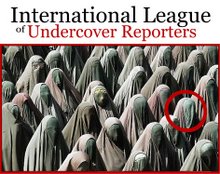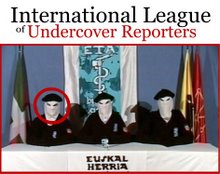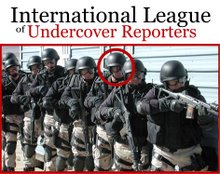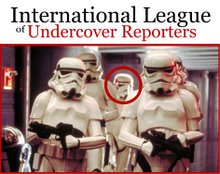
Ou plutôt la méthode Rafael Perez, gourou de la CRASH team de la police de Rampart (Los Angeles), qui défraya la chronique à la fin des années 90, avant d'inspirer la fameuse STRIKE team de Farmington.
La Ligue a lancé ses chiens sur le net à la recherche des traces de la CRASH team.
Sur le site (très orienté) de World Socialist Web Site on trouve un article documenté et très intéressant, avec une analyse "sociologique" à lire avec un oeil critique :
Substantially more information has been made public in the Los Angeles Police Department corruption and frame-up scandal. News reports have revealed a widespread pattern of unjustified arrests, beatings, drug dealing, witness intimidation, illegal shootings, planting of evidence, frame-ups and perjury at the CRASH unit of the Rampart Division of the LAPD.
CRASH is the acronym for the Community Resources Against Street Hoodlums, an anti-gang program the LAPD implemented over a decade ago. The Rampart Division covers an eight square-mile area, just west of downtown, which is largely working class, heavily immigrant and densely populated.
LAPD officer Rafael Perez joined Rampart CRASH in 1996. In 1998 Perez was arrested for stealing eight pounds of cocaine, valued at a million dollars, from the Rampart evidence locker. In 1999 Perez began to cooperate in giving evidence against his former associates in the hope of receiving a reduced sentence on the cocaine theft charge. On February 24, 2000 Perez received a five-year prison term on the cocaine theft charges, but he is expected to stay in jail only a little over a year more, given time served and credit for good behavior.
Investigators from a task force put together by the LAPD and the Los Angeles County District Attorney's Office logged over 50 hours of interviews with Perez over the last six months. Two Los Angeles Times reporters undertook an investigation of the scandal, and bits and pieces of Perez's story began to emerge.
Last month the Los Angeles Times published many of the revelations from 2000 pages of Perez's testimony. The law-breaking activity among police was so pervasive that the Times concluded: “An organized criminal subculture thrived within the LAPD, where a secret fraternity of anti-gang officers and supervisors committed crimes and celebrated shootings.”
Among the most chilling revelations concern outright police murders or attempted murders. In 1996 CRASH officer Kulin Patel shot Juan Saldana when he was running down an apartment hallway. Patel and his partner then planted a gun on Saldana after he went down. When the CRASH supervisor, Sergeant Edward Ortiz, arrived, he delayed calling an ambulance so the officers could concoct a cover story. Saldana bled to death by the time he arrived at the hospital.
In another incident CRASH officers fired 10 rounds at Carlos Vertiz, a 44-year-old man with no criminal record, after they mistook him for a drug dealer. To justify the shooting, officers then planted a shotgun near the dying Vertiz which they claimed he had pointed at them.
In 1996 Perez and his partner Nino Durden shot 19-year-old Javier Ovando in the chest and head and then planted a gun on him. Ovando received a draconian 23-year prison sentence because he would not show contrition. In fact, he was innocent. Ovando was released last year, after serving two years. As a result of his injuries he is now confined to a wheelchair.
On New Year's eve 1996, Rampart CRASH officers opened fire on and wounded two holiday revelers, afterwards arresting them on trumped-up charges. The officers then rehearsed the story that they had fired in self-defense, claiming the revelers had fired guns in the officers' direction. One unnamed officer has reportedly told his attorney that the CRASH cops were out “hunting” that night, that is, looking for people to ambush in sport.
Perez told investigators the lengths to which Rampart officers and their supervisors went to cover up bad shootings. In one instance, a rookie patrol officer shot a man when he opened a closet during a search and was startled to see the man inside. When the rookie's supervisor arrived at the scene he decided the rookie should say the man was holding a mirror, causing him to see his own reflection with a gun and open fire, thinking he had encountered an armed suspect.
Officer Melissa Town shot at a youth who was sitting with a group of friends by a park and then ran when she accosted him. When her supervising sergeant arrived, he pulled a 5-1/2 inch piece of chrome from the bumper of a nearby car and instructed Town that she should say the suspect had pointed it at her.
L'intégralité de l'article : partie 1, partie 2, partie 3, partie 4.
Source : WSWS.org (Don Knowland, Gerardo Nebbia, 13 mars 2000).

Comme toujours, Wikipedia offre un article assez complet sur le sujet :
The Rampart Scandal refers to widespread corruption in the Community Resources Against Street Hoodlums (C.R.A.S.H.) anti-gang unit of the LAPD Rampart Division in the late 1990s. More than 70 police officers in the CRASH unit were implicated in misconduct, making it one of the most widespread cases of documented police misconduct in United States history. The convicted offenses include unprovoked shootings, unprovoked beatings, planting of evidence, framing of suspects, stealing and dealing narcotics, bank robbery, perjury, and covering up evidence of these activities.
The Rampart Scandal is notable in popular culture because several Rampart police were found to be on the payroll of hip-hop mogul Marion "Suge" Knight of Death Row Records, a convicted felon with known ties to the Bloods gang. Moreover, detective testimony and a wrongful death lawsuit filed on April 16, 2007, holds Rampart CRASH officers Nino Durden, Rafael Pérez, and David Mack responsible for the 1997 drive-by murder of platinum-selling hip hop recording artist Notorious B.I.G.
As of May 2001, the Rampart investigation had brought 58 officers before an internal administrative board. Of these, 12 were suspended, 7 resigned, and 5 were terminated. As a result of the probe into falsified evidence and police perjury, 106 prior criminal convictions were overturned. The Rampart Scandal resulted in more than 140 civil lawsuits against the city of Los Angeles, costing the city an estimated $125 million in settlements.
As a result of the scandal, Police Chief Bernard Parks was not rehired by Mayor James K. Hahn in 2001, which is believed to have precipitated Mayor Hahn's defeat by Antonio Villaraigosa in the 2005 election.
The full extent of Rampart corruption is still not fully known, with several murders and robberies involving Rampart police that remain unsolved to this day.
L'article intégral, c'est : ici.
Source : Wikipedia.
 On trouve également un article excelent sur PBS.org, en plusieurs volets, à parcourir dans le détail.
On trouve également un article excelent sur PBS.org, en plusieurs volets, à parcourir dans le détail.In 1995, Perez joined the Rampart anti-gang CRASH unit. There, Perez says, he discovered and eventually became immersed in a cauldron of police misconduct. According to Perez, he first began stealing drug money at the urging of his partner, Nino Durden [Durden has told federal investigators that Perez was the instigator]. One thing led to the next, and by 1998, Perez was stealing and dealing pounds of cocaine.
Arrested and facing the prospect of a lengthy prison sentence, Perez cut a deal with prosecutors and, in the course of 35 interviews, began to unspool a story of widespread police misconduct ("believe me when I tell you, if there was 15 officers in CRASH, 13 of them were putting cases on people").
At his sentencing in February, 2000, Perez marketed his version of what went wrong. He offered apologies and accepted blame. But, he also blamed the "intoxicant" of police power. "The us-against-them ethos of the overzealous cop began to consume me. And the ends justified the means," he told the court. "We vaguely sensed we were doing the wrong things for the right reasons. Time and again, I stepped over that line. Once crossed, I hurdled over it again and again, landing with both feet sometimes on innocent persons. My job became an intoxicant that I lusted after."
While investigators have corroborated some of what Perez has alleged, they have also, they say, found many inconsistencies in his statements. Over the course of the ongoing investigation, Perez's credibility has come under increasing scrutiny. He failed every question on five polygraphs (two polygraph experts believe the tests were improperly administered) and several jail-house informants have testified that Perez boasted of retaliating against the L.A.P.D. and burning cops he didn't like. Investigators have come to believe that Perez has been less than truthful, even cunningly artful in directing the course of the investigation. "He was very self-assured, very cocky. The type of person who wanted to take charge at all time," says lead detective, Brian Tyndall. "We knew he was an admitted, at this time, liar, perjurer. We knew he was a thief. He was a con. That's the best way of probably of describing him. The best word I could use."
"You can't trust Rafael Perez," says Dep. DA Richard Rosenthal, who prosecuted Perez and sat in on most of the debriefings. "He's a perjurer. He is a dope dealer. He's a thief, among any other numerous adjectives you could come up with that would negatively describe his personality."
Pour l'intégralité c'est : ici.
Source : PBS.org.
Pour finir, la Ligue vous conseille un article intéressant sur la CRASH team de Rampart et les insignes secrets des unités de police : ici.






Aucun commentaire:
Enregistrer un commentaire